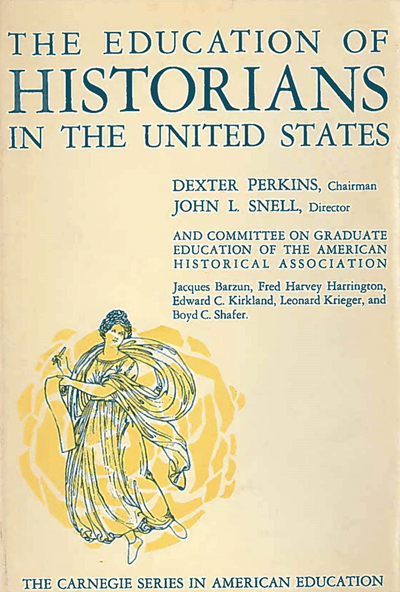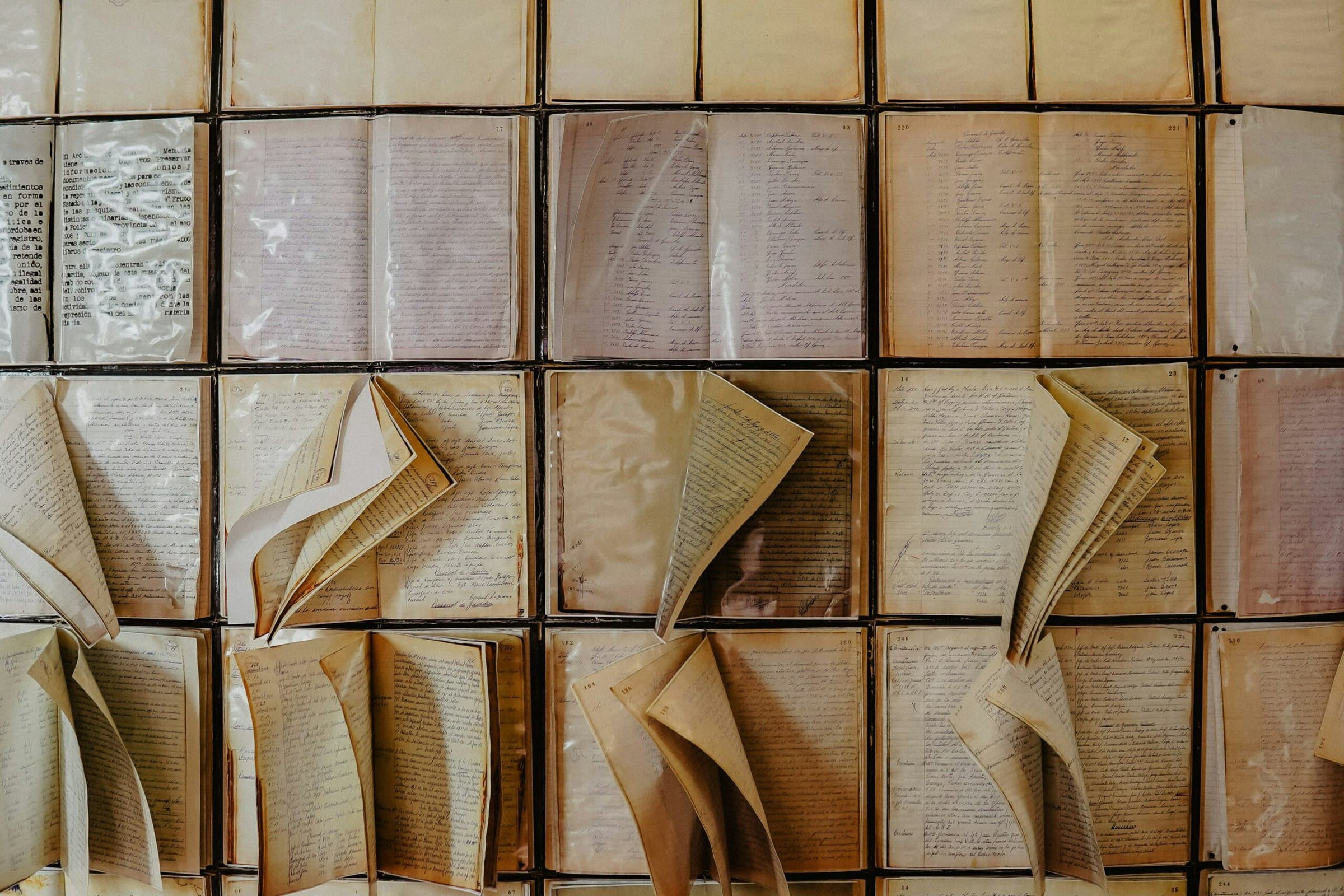Dexter Perkins, Chairman
John L. Snell, Director
and
Committee on Graduate Education of the American Historical Association
Jacques Barzun, Fred Harvey Harrington, Edward C. Kirkland, Leonard Krieger, and Boyd C. Shafer
 Table of Contents
Table of Contents
1. Introduction: As Seen by the Chairman
2. Do We Need More College Teachers?
3. Graduate Students in History
6. Ph.D.-Training Institutions
8. Major Criticisms of Ph.D. Training
9. Experiments with Teacher Training and Tightened Programs
10. Recommendations
Foreword
This book, it is hoped, will be one of a series on the historical profession. Discussions concerning this study of the graduate education of historians began during the winter of 1956–1957, following the Presidential Address of Professor Dexter Perkins in St. Louis at the annual meeting of the American Historical Association. The association, with funds from the Carnegie Corporation of New York, sponsored the study through its Committee on Graduate Education composed of Dexter Perkins, chairman, Jacques Barzun, Fred Harvey Harrington, Edward C. Kirkland, Leonard Krieger, and Boyd C. Shafer. In September, 1958, with a generous grant of leave from Tulane University, Professor John L. Snell became director of the study. With the committee’s counsel and following its general plan, he collected most of the materials for this book through hundreds of questionnaires, dozens of visits to universities, interviews with both teachers and students, and other intensive research. Professor Snell wrote Chapters 2 to 9, Professor Perkins wrote Chapter 1, and Chapter 10 contains the Recommendations of the Committee.
Washington, D.C.
Boyd C. Shafer
Executive Secretary
American Historical Association
Acknowledgments and Sources
This study has been conducted under the auspices of the American Historical Association, and has been made possible by a generous grant from the Carnegie Corporation. The author of Chapters 2 to 9, Professor Snell, is grateful to Tulane University for granting him a leave of absence for his work as director of the study. He is also indebted to Mrs. Virginia Ktsanes, Mrs. Kenneth Vines, Mrs. Charles P. Roland, and Robert Mitchell for assistance in the tabulation and analysis of data from questionnaires; to Mrs. James B. Kemp for typing the final manuscript; to Maxine Pybas Snell for her unstinting work as his secretary; and to members of the committee who gave encouragement, stylistic help, good advice, and freedom to complete the assignment they gave him in 1958: to discover and describe—as objectively as possible—practices and problems in graduate training in history and suggestions for their improvement.
All members of the committee wish to express their thanks to the historians who filled out questionnaires, answered letters, and granted more than two hundred interviews during the course of this study.
A special word of thanks should be offered here to Joe Spaeth of the National Opinion Research Center for a report on graduate students in history, based upon a larger study of graduate students undertaken by the NORC; to John K. Folger and Kenneth M. Wilson of the Southern Regional Education Board for data on recent Ph.D.s in history; to John L. Chase of the Office of Education, who provided useful data on fellowships for graduate study; to Paul M. Allen, who made available drafts of a study of graduate education prepared for the American Association of Colleges for Teacher Education; and to Bernard Berelson for advice and data from his own more general study of graduate education.
The footnotes to Chapters 2 to 9 provide an extended bibliography of the studies by others that were used in preparing this study. There would be little advantage in repeating here the references that each chapter contains. The major sources for the information presented in Chapters 2 to 9—usually without footnotes—are the questionnaires and interviews noted in the appendixes.


